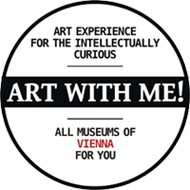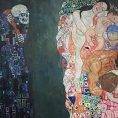Klimt. Inspired by Van Gogh, Rodin, Matisse. An exhibition exploring the intangible
Exhibition in the Lower Belvedere
Inspiration is one of the most speculative topics in art, and not just art. How to find, invent and discover something new, unique and valuable is not even a million-dollar question… How much is an iPhone patent, the rights to Yesterday or a Pfizer/BioNTech vaccine formula worth?
Of the three catalysts for creativity – education, insight, environment – only the latter can be presented both plausibly and engagingly. As stories about creative insight sound too fabulous (Newton’s apple, Archimedes’ bathtub, etc.), and the listing of diplomas are boring.
The exhibition ‘Klimt. Inspired by Van Gogh, Rodin, Matisse‘ at the Belvedere is an attempt to understand how Gustav Klimt was influenced by the works of his much better known contemporaries.


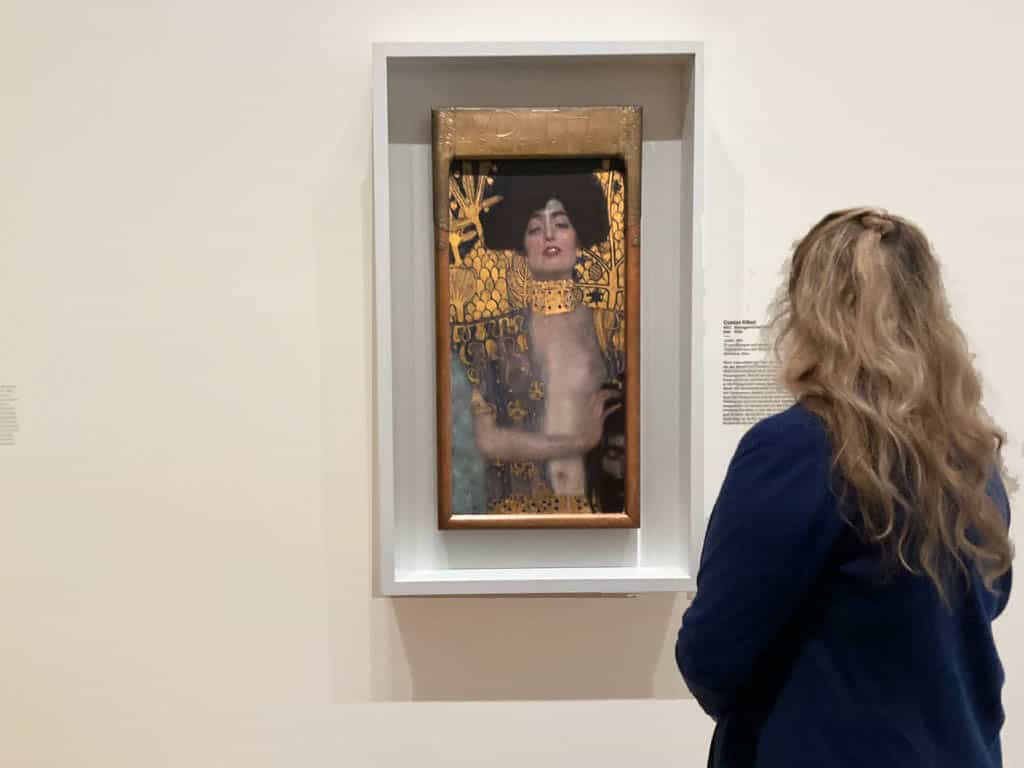
The best pupil
In the first room, Klimt’s paintings are displayed alongside those masters, from whom he took example as a good apprentice. One may not recognise Klimt’s own work here, as the realism of his early style is always surprising when you come right up against it. But it is impossible not to see the compositional solutions by Michelangelo or Uccello, reproduced in every book on Renaissance art.

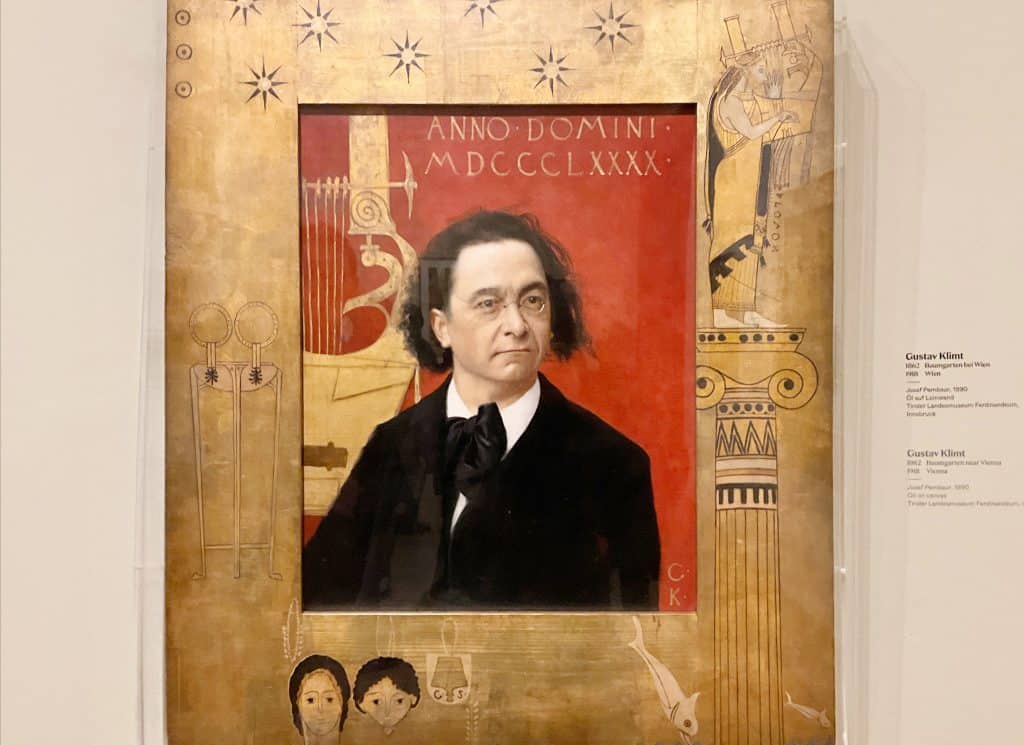
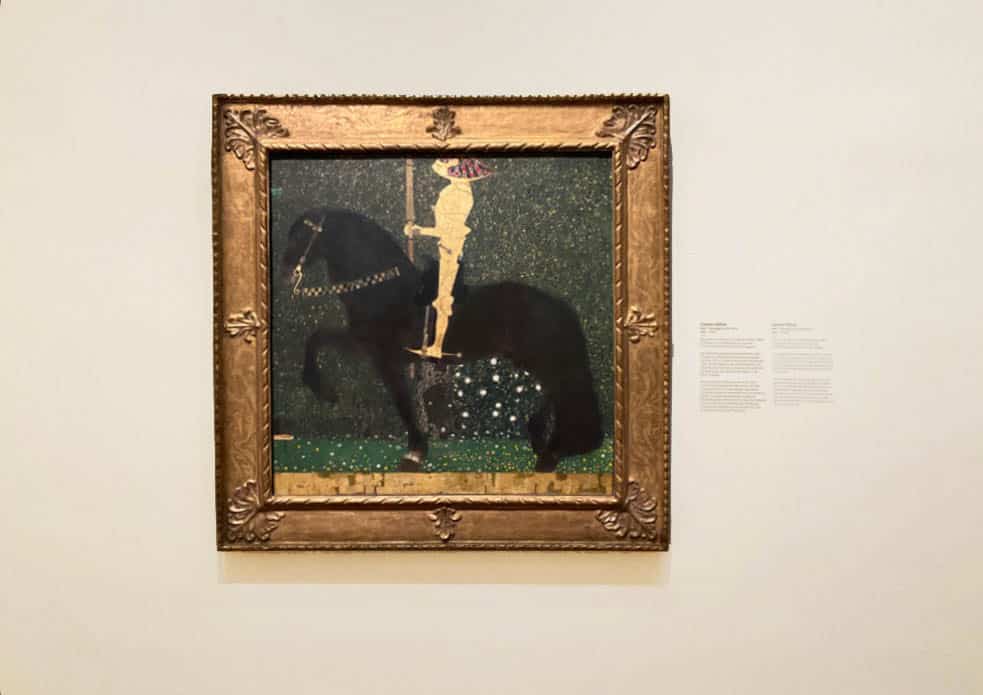
Of the works by artists who were a living example for Klimt’s generation of stunning success built on a reworking of classical heritage, Hans Makart’s sketches for the lunettes of the Museum of Art History and two small paintings by Lawrence Alma-Tadema are featured. Viewers are expected to recognise the classical examples without prompting. Greek vases as a source of inspiration for Klimt are not forgotten either. The portrait of Josef Pembauer and the images of Athena Pallada illustrate this.
A game of comparison
But from the second room, where the paintings are displayed in pairs and can be compared live, the similarity between Klimt and Monet, Klimt and Van Gogh, and Klimt and Sera in their depiction of certain elements in a particular technique seems so obvious that one would believe that Klimt could have been guided by the principles of Austin Kleon’s bestseller “Steal like an Artists”.


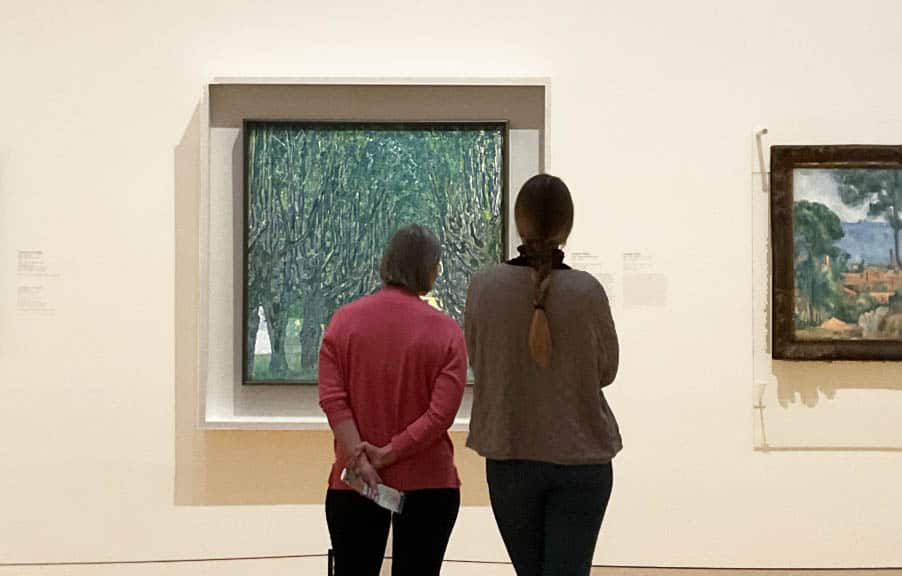
The curators certainly have no aim of making Klimt look like an epigone. Obviously, no new style, new language, or new idea is born in a finished form. The evidence of Klimt’s work with the techniques of his contemporaries only adds to the respect for his tireless search of the self. Such search also goes through appropriation.
The comparisons look convincing, although maybe not at first glance. For example, the exhibition draws a parallel between the male backs in Klimt’s Kiss to the World, the sculptures by Georges Minnet and the drawings by Sascha Schneider. If you add Rubens’ Venus with Mirror or Hendrik Goltzius’ view of Hercules Farnese (this engraving is on display at a parallel exhibition in the Albertina), the difference in how different artists look at the same surface becomes more palpable.

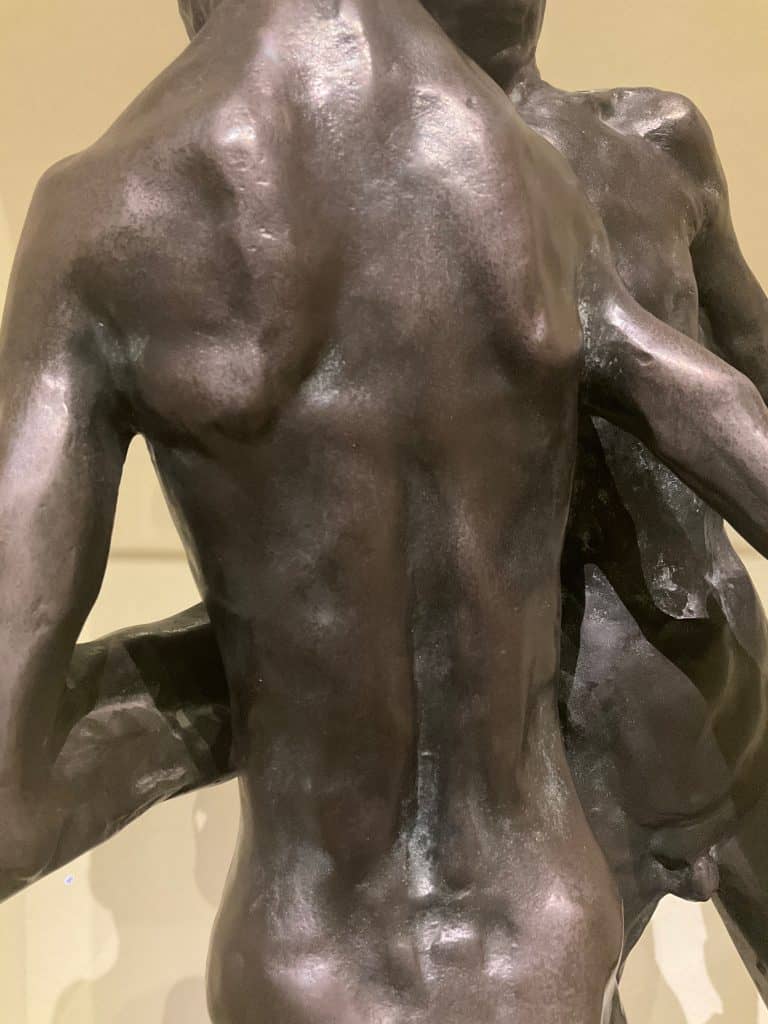
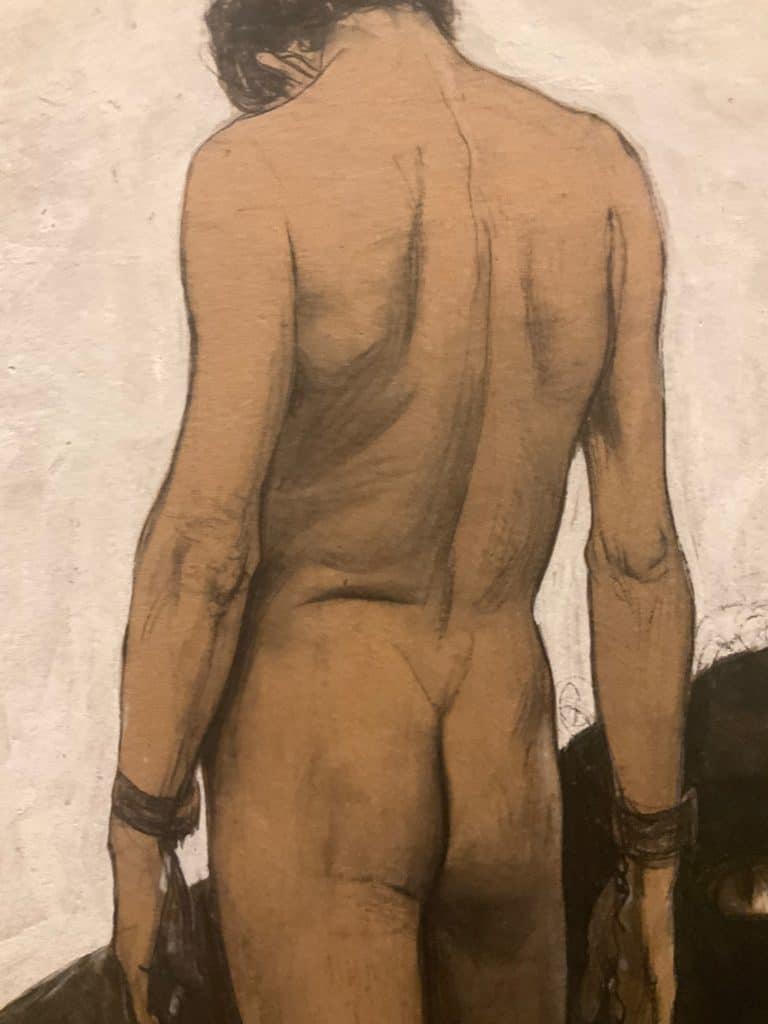

Documentation and chronicle
One cannot but admire the work of the researchers, who tried to verify which specific paintings Klimt must have seen. Information blocks with reproductions of paintings exhibited in Viennese galleries are incorporated into the exhibition. After all, the question of whether it is influence, borrowing, omage or the spirit of the times is often a decisive factor in assessing an artist’s work.
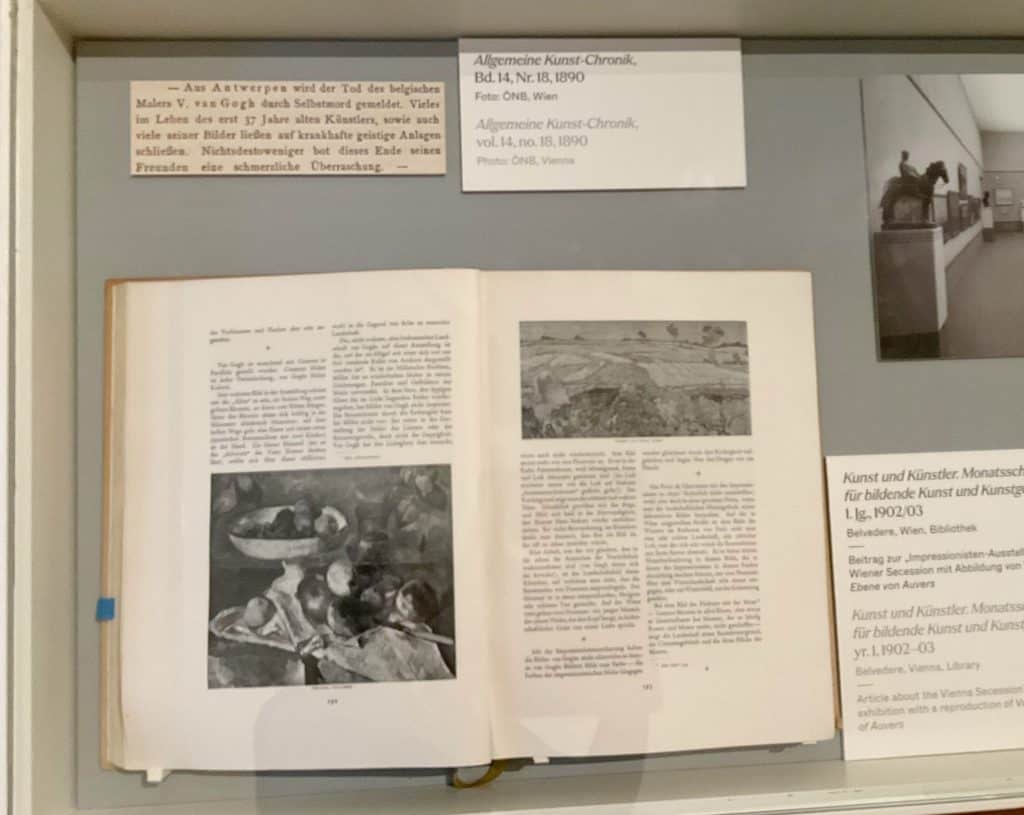

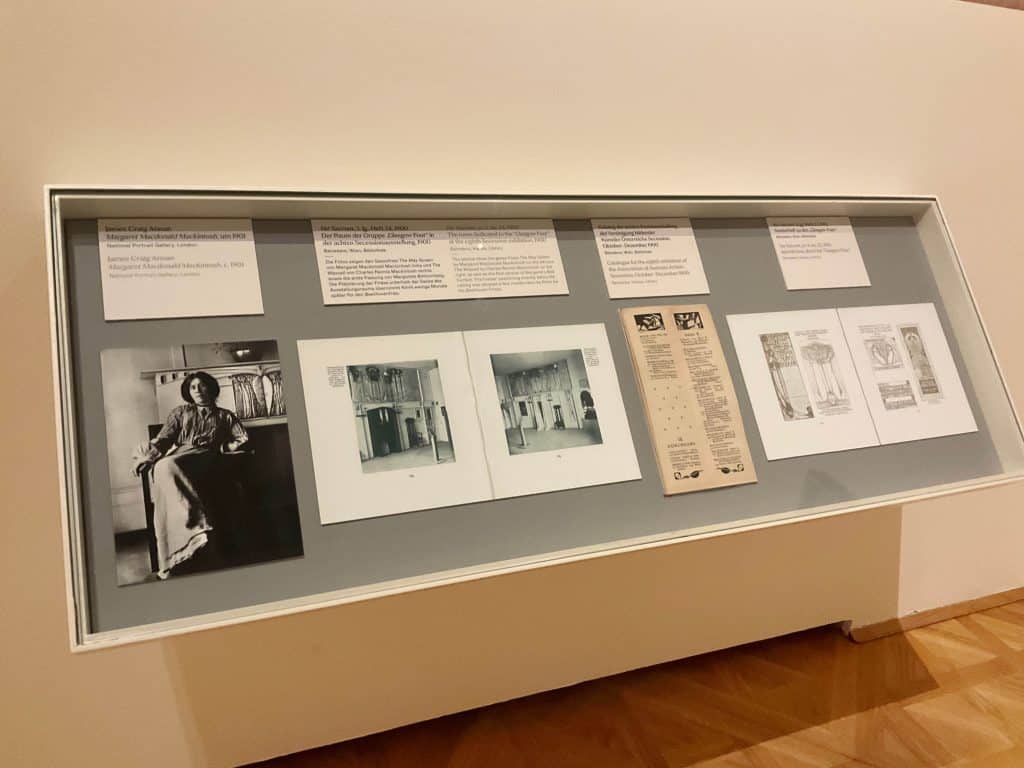
The finest, the rarest
As an attempt to give a simple answer to a complex question, the exhibition generates excitement but fails. But as an opportunity to see rarely exhibited works, it is magnificent. There are paintings from private collections – “Water Snakes II”, Portrait of Eugenia Primavie, “Ria Munch on Her Deathbed”, and paintings from the collection of the City Museum of Vienna, which the public missed due to the reconstruction of the museum (“Portrait of Emilie Flöge”, “Athena Pallada”, etc.). Also there is a copy of one of the panels of the Beethoven frieze, allowing a different perspective on the original, because at the Secession one has to look up at the paintings, while at the exhibition the fragment with the “Choir of Angels” and “A Kiss to the World” is located only slightly above eye level.


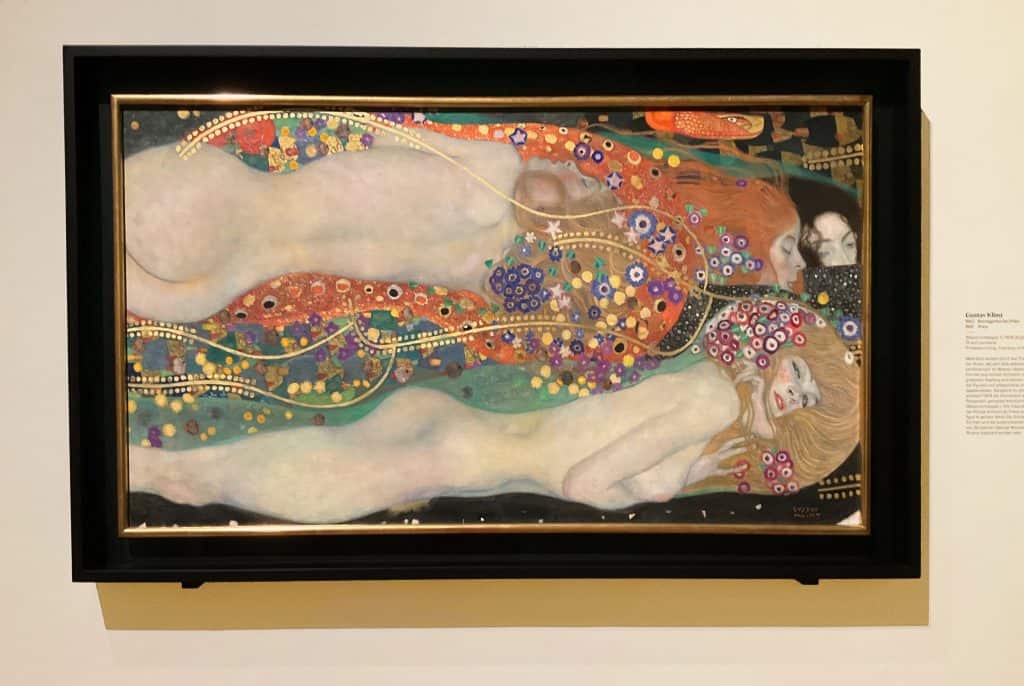
And even more important is the exhibition’s message that the creative process is a mystery. Even knowing all the technical details and the artist’s biography down to the notes of a psychotherapist, it is impossible to understand HOW the “Kiss”, which is instantly and forever etched in one’s memory, is made. But to speculate about it is infinitely interesting. So all those who are in search of the “philosopher’s stone” of creativity or love Klimt’s paintings will be able to spend a few unforgettable hours at the exhibition‘Klimt. Inspired by Van Gogh, Rodin, Matisse’.
Lower Belvedere
Adress: Rennweg 6A, 1030 Wien
The exhibition runs until 29 May 2023, daily from 9:00 to 18:00, Wednesdays and Fridays until 21:00.
Exhibition website
You may also like:
